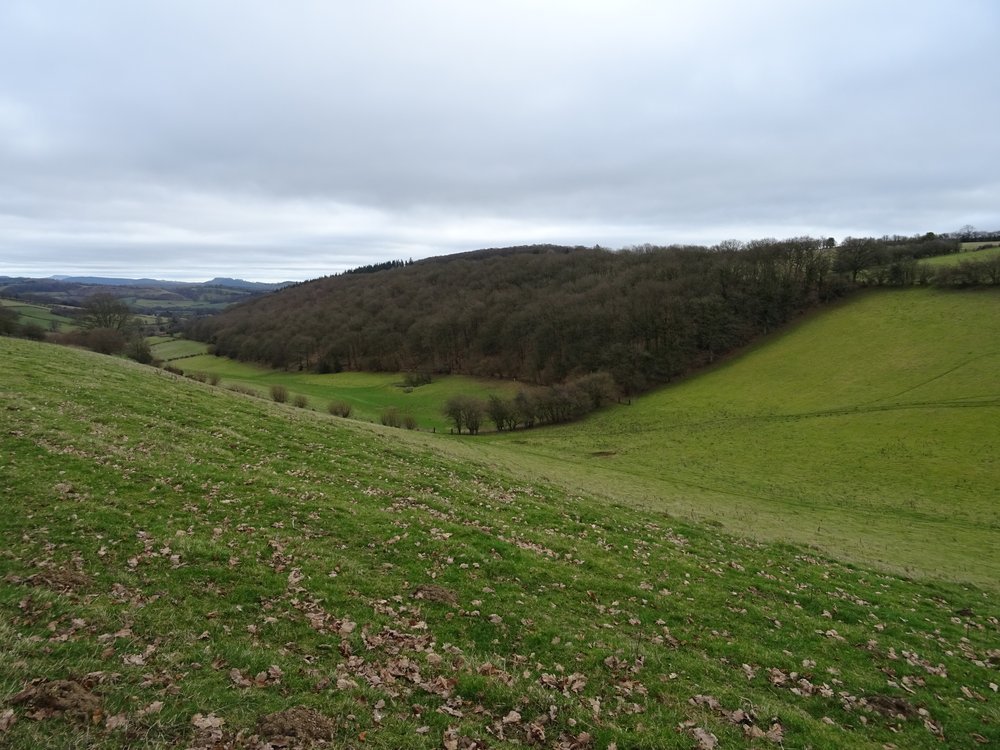Woodland
Willey Lane Wood is designated as ancient semi-natural woodland, meaning the site has been wooded continuously since at least 1600 AD. The site shows signs of management through the ages as the majority of trees in the main part of the wood are Sessile Oak (Quercus Petrea) with a small section of Hazel ( Corylus). There are at least a couple of areas that look like charcoal hearths and a few pollarded trees which were presumably boundary markers. Young hazel is very flexible and would have been coppiced and used to produce wattle fences, baskets, etc.
The wood,we understand, was pretty much clear felled in the 1930s, leaving a few veteran trees, and allowed to naturally regenerate. Regular management was disrupted by the second world war and the wood was neglected until the early 21st Century when management was recommenced. The lack of management is shown by the growth of two or three stems on each tree stump, which produced a dense spindly growth of little commercial value except as firewood, a dense canopy which prevented light from reaching the woodland floor, and the veteran trees being crowded by nearby growth.
We had the woodland commercially thinned early this century, removing some 800 tonnes of timber for use as firewood. More recently we have cut rides through the wood, which are maintained on an annual basis, cut out areas to produce glades to allow light to reach the woodland floor to allow it to regenerate, increased the amount of standing and fallen dead wood, and cut out the growth around the veteran trees to allow them to flourish.
Roe deer have now taken up residence in the wood and, as they eat young shoots, inhibit the natural regeneration process of earlier times.
The ancient semi-natural woodland covers an area of 22.8 acres (9.15 hectares) on a north facing slope and is mainly sessile oak (quercus petrea), the acorns are not held on stalks like those of the English oak (qurcus robur), with a small section at the eastern end which is a hazel coppice, which would have been used for making hurdles, etc. There are no footpaths to the wood hence it is unspoilt.
Willey Lane Wood, we understand, was pretty much clear felled in the 1930s and has regenerated since, resulting in two or three thin trunks on each bole. The canopy was very dense when we bought the farm and we had it professionally thinned at the beginning of this century, some 800 tonnes of timber being taken out. Thinning the timber encourages the trees to thicken rather than growing tall and thin.
More recently we have cut rides in the wood and carried out selective thinning to produce glades to allow light to penetrate the canopy and allow the floor fauna and flora to regenerate.
Roe deer now live in the wood, normally a family group of mother and daughter at each end, but they obviously move freely from end to end as shown by the deer track along one of the rides. this track extends along the whole length of the wood.
Deer eat new shoots of anything that grows, so they inhibit natural regeneration. Their presence can be seen from the bramble shoots being nipped off.
In order to assess the impact the deer are having on growth, two exclusion zones (the small fenced enclosure in the picture) have been installed. The impact the deer are having can be assessed by comparing the growth within the exclusion zones with the growth without.
Multiple trunks from a single root
Veteran Tree
Wood Anemones on a ride
Bluebells in the hazel coppice
Cutting the rides
Cutting the rides
Willey Lane Wood, February 2023










